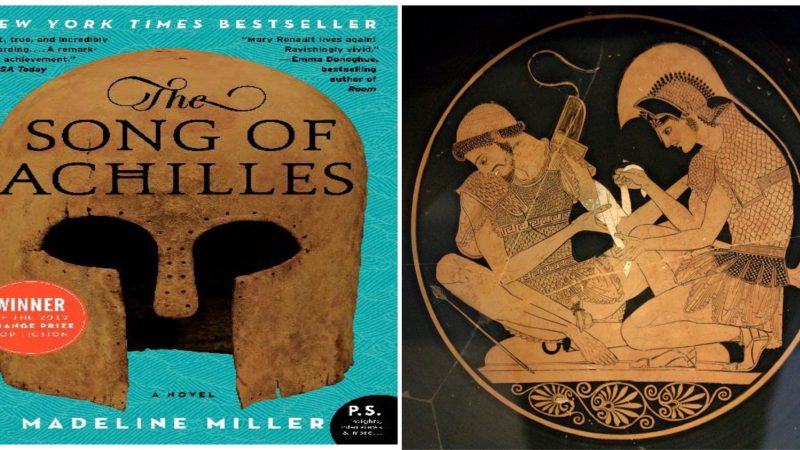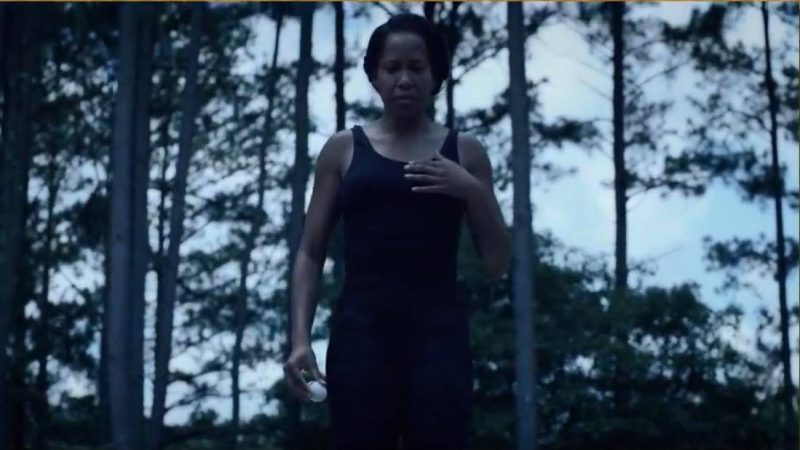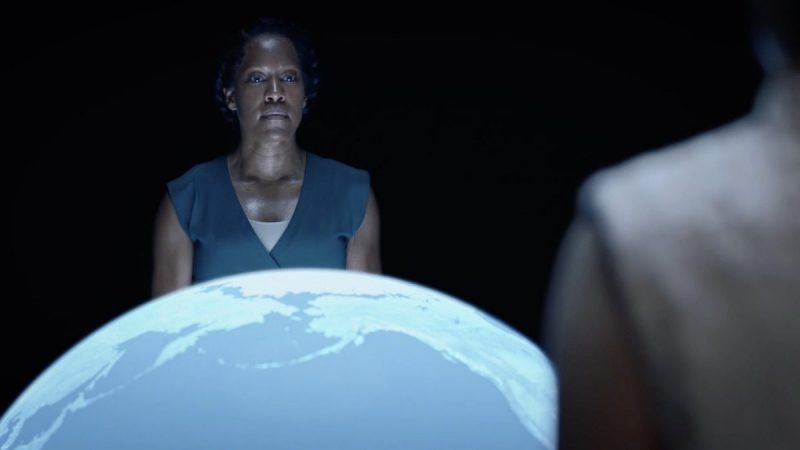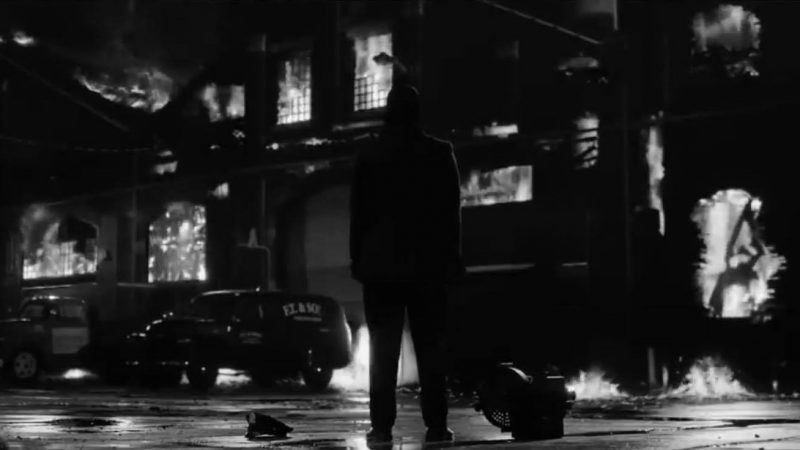Keeping Up With the Targaryens

Excited for season 8 of Game of Thrones? Of course you are. You, like the rest of us, have been waiting a thousand years to see how the epic series is going to shake out in its final season. But do you remember all the intricate plot details that might come into play? Of course you don’t. Don’t pretend. No one is that good.
Even this author, resident Game of Thrones expert, had to do a significant amount of research to prep. And I noticed something: when the show’s intense plot is broken down chronologically, episode by episode, it’s still pretty hard to track. So I’ve prepared a three-part summary of the plot of Game of Thrones so far, each part focusing not on a set of seasons, but instead a set of major characters. Want to know the entire plot of season 5? No you don’t. Want to know Daenerys Targaryen’s entire character arc? Of course you do! And I’ve got you covered.
This third part follows Daenerys Targaryen, who is, to our knowledge for most of the show, the last living Targaryen. Don’t need or want a detailed summary? Scroll to the end of the article for tl;dr (too long; did not read) version, key players, and burning questions. Here’s part three, on House Targaryen:
For three hundred years, unbroken until the rebellion twenty years ago, the Targaryens ruled the Seven Kingdoms of Westeros. Before Aegon I Targaryen, known as Aegon the Conqueror, first invaded Westeros, the family hailed from Valyria, the ancient city whose fall, a spectacular destruction by an eruption of flame that still smoulders centuries later, remains shrouded in mystery. When the city fell, only the Targaryens were canny enough to flee in the wake of a series of bad omens, taking refuge in their keep on the island of Dragonstone off the coast of Westeros. So it was that, when the people and dragons of Valyria were no more, the Targaryen dragons thrived in Westeros.
Some hundred years after the Doom of Valyria, young Aegon Targaryen began his conquest of the Seven Kingdoms. The war was started by a squabble over a proposed royal marriage, but it’s unlikely that Aegon needed much provocation to bring his dragon, with his sisters and their dragons at his sides, over to this divided land ripe for the conquering. Within two years, Aegon was crowned King of the Seven Kingdoms, having intimidated or destroyed every lesser king that got in his way. With his sisters Visenya and Rhaenys–also his wives–at his side, he began centuries of centralized rule and even more centralized marriage customs (yikes).
As the history not only of Westeros, but also of Europe and other continents, has shown us, this method of maintaining a family’s bloodline does not “purify” them; rather, it poisons. This was certainly the case for the Targaryens, who became increasingly mentally unstable as their similarly inbred dragons became smaller and weaker. By the time of Aerys II Targaryen, the Mad King” who ruled when Ned Stark was a child, dragons were entirely extinct on the continent–nor, as far as anyone knew, could they be found anywhere else.
The story of the lifetimes of our characters begins with Aerys II. He and his sister cum wife, Rhaella, had three children, beautiful and apparently healthy The eldest, the courtly and charming Prince Rhaegar, was mercifully without a sister during his lifetime, causing him to be married out of the family to Elia Martell, Princess of Dorne (the southernmost region of Westeros). With Rhaegar’s younger brother, Viserys, being born just before Rhaegar and Elia’s two children, Rhaenys and Aegon, it was a fruitful time for the Targaryens. Unfortunately, just as their rule was being destabilized by whispers that Aerys was losing his mind, Rhaegar further threatened the line of succession by committing a shocking act: he disappeared with Lady Lyanna Stark, daughter of the Warden of the North, Rickard Stark. The assumption was that he had kidnapped Lyanna, though in reality the two were in love. Rhaegar had his marriage to Elia annulled and secretly remarried to Lyanna, retreating with her to a castle in Dorne while Westeros exploded into rebellion, led by Lyanna’s erstwhile fiance, Robert Baratheon. Robert quickly gained allies in the many lords who had hesitated to move against Aerys when he had an heir as promising as Rhaegar. Now that Rhaegar was disgraced, Aerys had to be dispatched. Robert’s armies slowly closed in, and this was the moment Rhaegar chose for his reappearance.
Things fell apart fast. Robert killed Rhaegar with a hammer blow to the chest at the Battle of the Trident, and with Rhaegar dead, the Targaryens had no viable heir. Viserys was too young, as were Rhaegar’s children. The war was all but lost. While Robert consolidated his victory, Tywin Lannister, Hand of the King to Aerys, betrayed his master, bringing his army to King’s Landing to sack the city on behalf of the rebellion. They arrived to find that Jaime, Tywin’s young son, a member of the Kingsguard, had already killed the king; during the sack of the city, Lannister bannerman Gregor “The Mountain” Clegane killed Elia and her two children, and Rhaella, who was pregnant with a third royal child, died giving birth to a girl, Daenerys. Now the only known living Targaryens, Viserys and Daenerys were spirited away by Targaryen loyalists to the eastern continent of Essos. This left only one Targaryen, born shortly after the end of the war to no fanfare. For Lyanna, Rhaegar’s wife, was pregnant, and gave birth in Dorne. Her brother Ned, arriving fresh from the field of victory to “rescue” Lyanna, witnessed the aftermath. A dying Lyanna confessed the parentage of the newborn, little Prince Aegon (yes, another one) to her brother, extracting a promise that it never be revealed for fear the child would be killed. Ned returned to Winterfell with news of his sister’s death. The baby, he explained, was a bastard child he had fathered during the war, to be called Jon Snow. When Jon was old enough, he would join the Night’s Watch, a useful place to stow one’s bastards and younger sons far from the political arena.
But while Jon was being raised amongst Ned Stark’s children in Winterfell, Viserys and Daenerys were raised by loyalists in the Free City of Pentos on Essos. It is never healthy for a child to be reared solely by his vassals, and Viserys proved this by growing up to be ruthless and entitled. Though proud of their royal heritage, Daenerys is enough Viserys’ junior to be cowed by his constant lectures about her duty to him as her future king. That all changes when he makes her a sacrifice in the game of chess he thinks he’s playing in season one. With the help of his loyalists, Viserys arranges to marry a thirteen-year-old Dany to Khal Drogo, an adult man and a powerful warlord amongst the nomadic warriors, the Dothraki. Understandably terrified to be put at the mercy of a known killer whose language she doesn’t speak, Daenerys is informed in no uncertain terms that she is not being given a choice. Viserys needs Khal Drogo’s army to help him take Westeros back, and he is willing to sell his sister to do it. So Dany is married to Khal Drogo, and it is rough going at first (the show emphasizes this by scrapping a consensual sex scene from the book and replacing it with a scene in which Khal Drogo rapes Dany, because why build a realistic relationship when you can horrify viewers instead?). But the two begin to see eye to eye as Dany learns to please Drogo sexually, learns his language and culture, and does one hundred per cent of the work in the relationship. Eventually, Dany becomes pregnant, and Viserys, feeling threatened, insists that Drogo and army ride to Westeros immediately. Dany, much savvier than her brother and much more confident now that she has experience with her own adaptability, plots with Drogo to get Viserys out of the way. They roll out some poetic justice, literalizing his demand for a “crown of gold” by pouring molten gold over his head. Dany and her unborn child are now, to her knowledge, the only living Targaryens.
Dany nurses her ambition, content for now to consolidate her own power amongst her husband’s men, to encourage Drogo to dream of glorious conquest in Westeros, and prepare for the birth of her heir. Unfortunately, this dubious familial bliss is cut short by politics. Following the sack of a city by Drogo’s forces, his soldiers are trying to commit some routine war atrocities when Dany puts it to a spot. There will be no raping, she announces, to the utter astonishment of the men of her Khalasar. Khal Drogo backs her on this surprisingly controversial decree, to his doom. A fight breaks out amongst his closest generals, and while Khal Drogo comes out victorious, he is also badly wounded. The wound becomes infected, and by the time Dany is ready to give birth, he is near death. A desperate Dany begs a maegi, or witch, that she saved from Khal Drogo’s men, to save Drogo’s life. The maegi tells her that she can save Drogo’s life, but there will be a great sacrifice. Dany agrees, not understanding what shortly becomes clear: the required sacrifice is the life of her newborn child. After an agonizing night, the child–a boy–is stillborn, and Drogo’s wounds are healed, but at an even more terrible price. He is catatonic, a body without a soul. The Khalasar leaves them behind, and after a few days of caring for her catatonic husband, Dany realizes he is as good as dead and smothers him with a pillow. Enraged, she confronts the maegi, who confesses that she spun this bad bargain as revenge not only for Drogo’s brutality, but also for Dany’s condescension in believing she could “save” lower-class women from atrocities they had already suffered time and again. Dany, however, is not exactly an intersectional feminist, and decides that the appropriate response is to tie the woman to Drogo’s funeral pyre and watch her burn. Dany piles the pyre with her own and Drogo’s things (including three petrified dragon eggs she had received as a wedding present), and when the maegi is dead and the flames high, she walks in herself…and emerges with the dawn, unburnt, with three baby dragons clinging to her. Fire, we are told, cannot kill a dragon, and that is what the Targaryens are.
Season two sees Dany, her dragons, and the straggler Dothraki who still follow her journeying across the Red Waste, a vast desert that separates many of the Free Cities of Essos. The journey is brutal, and many die before the group is offered sanctuary in the city of Qarth. Not much happens; after refusing a marriage proposal from a local lord, Dany finds her baby dragons captured by the warlocks of Qarth, leading to the famous line, “where are my dragons?” Dany goes into the warlocks’ lair, and in her quest to rescue her babies she encounters a vision: herself, standing in the burnt-out ruins of the Red Keep (house of the ruler of Westeros, located in King’s Landing, a place Dany has never visited in reality), with snow falling. Freed from the vision, she rescues her dragons, and she and her people move on.
Season three finds Dany and her much-dwindled followers in the slave-owning city of Astapor. There, her dragons draw much interest, and a merchant offers to sell her his large force of mercenary slaves in exchange for one of them. Dany meets the enslaved translator Missandei, and the two immediately bond. Missandei explains that the mercenaries, called the Unsullied, are castrated at a young age, based on the idea that a castrated man has no sexual urges and therefore is less likely to be distracted (all later proven false when Missandei falls in love with Grey Worm, the leader of the Unsullied). Dany is horrified by what the Unsullied have gone through, but they are undeniably skilled, and she can use the army. She agrees to the trade, but when the day comes, she instead orders her dragon to set the slaver on fire, frees the Unsullied, and asks them to fight for her willingly. With Grey Worm as their spokesperson, they agree. The Unsullied lead a slave rebellion, freeing the slaves of Astapor before moving on to another city, Yunkai, and freeing the slaves there. The newly freed people adore Dany, calling her “Mhysa,” which means “mother.”
In season four, Dany and her army move on to Meereen, another slave city, where they not only free the slaves, but also execute the most powerful slave owners via crucifixion, the method that had previously been used to punish “disobedient” slaves. This leads to a great deal of political turmoil, and Dany decides to stay in Meereen and attempt to establish some political stability. When she hears word of slave masters taking over again in Yunkai, she sends her mercenary boyfriend, Daario Naharis, to destroy them. She is further isolated when her Queensguard leader, the Westerosi exile Ser Barristan Selmy, discovers that her loyal retainer Jorah Mormont had, during the events of season one, been working as a spy for Robert Baratheon. Jorah is another exile, but unlike Ser Barristan, he does not have a noble reason for it; he was discovered trading slaves in Westeros, where the practice is illegal, and banished for it. Dany’s divergent opinion on slavery has already been straining their relationship (as is the fact that Jorah, old enough to be her father, is in love with her), and this is the last straw. Dany sends Jorah away. When her dragons are found to be killing and eating humans, she is also forced to lock them away.
Come season five, she is still stalling in Meereen. Angry former slave owners form a terrorist group, the Sons of the Harpy, and Ser Barristan dies defending Grey Worm from an attack. This enrages Dany, so much so that she feeds a nobleman associated with the group to her dragons; but realizing the intensity of the political unrest, she relents, and begins to negotiate with the remaining masters to reopen the slave fighting pits of Meereen and betrothe herself to one of the masters. Meanwhile, Jorah has run into Tyrion Lannister and captured him, but in turn both have been captured by slavers–but not before Jorah contracts a deadly illness called greyscale. Aware of Jorah’s fighting skill and his deadly condition, Tyrion manages to talk their captors into allowing Jorah to fight in the pits. This puts Tyrion in the rehearsals at the fighting pits, where he meets Dany and, in short order, swears allegiance to her. Dany accepts Tyrion as the gift he is but sends Jorah away again, ordering him to find a cure for his greyscale before he returns to her. At the grand opening of the pits, Dany survives a poisoning attempt by her new fiance, and her dragon Drogon burns him to death before spiriting her away from the other assassins closing in on her. But Drogon is still an animal, and in the end he deposits her in a field and flies off, presumably to get them some food. Alone and unarmed, Dany is found and captured by a Dothraki horde.
Don’t worry; in season six, things start to get interesting. The new Dothraki Khal, a former follower of Drogo’s, recognizes Dany and tries to imprison her in the house where Dothraki widows live, essentially a really grim convent. Outraged, Dany tricks the Khal and his associates into meeting all in one place to hear her pleas, but then blows the building up; after all, she is fireproof. Seeing her victorious and (yet again) unburnt, the remaining Dothraki bow to her, and the Khaleesi has a Khalasar again. She returns to Meereen to find that Tyrion (now her Hand of the Queen) and the escaped Westerosi spymaster Varys have been successful at jointly ruling the city in her absence. They accept a Red Priestess, Kinvara, as another close advisor, though Kinvara’s assistance that Dany is going to fulfill an important religious prophecy (the prophecy of Azor Ahai, for which Jon Snow is also a candidate) makes them a little leery. When the slavers from surrounding cities attack Meereen, Dany and her dragons massacre them, but she has had enough. With her huge force of Unsullied, freed slaves, and Dothraki riders, she finally sets sail for Westeros.
Season seven sees Dany at her ancestral home of Dragonstone for the first time in her life. Just off the coast of the continent she hopes to retake, she is able to catch up on the political situation there, and is impressed by what she hears of Jon Snow. When she receives a raven begging for aid against the White Walkers, Tyrion encourages her decision to invite Jon Snow to Dragonstone. The two finally meet, and Jon, after some convincing and a promise that Dany will fight against the White Walkers, he bends the knee, and she makes him Warden of the North. Meanwhile, her allies in Dorne, led by Ellaria Sand and her new girlfriend Yara Greyjoy, are destroyed in a naval battle with Yara’s uncle Euron, current Lord of the Iron Islands and Lannister stan. Ellaria and Yara are captured, and Tyrion sends the Unsullied to the Lannister seat at Casterly Rock to take it over. Lannister forces, led by Tyrion’s brother Jaime, use the distraction to take the more strategically important Highgarden. Dany rides Drogon to Highgarden, followed by her Dothraki horde, and though Drogon is wounded by a specially designed bolt from the Lannisters, Dany and company win the day. Lannister bannerman Randyll Tarly and his son Dickon refuse to kneel to her, so Dany sets them on fire. No one is thrilled about that.
Jon has taken a small group of warriors North of the Wall to capture a wight as proof to the rulers in King’s Landing that the threat of the White Walkers are legitimate. The whole group nearly dies surrounded by White Walkers, but Dany swoops in at the last minute with her three dragons to rescue them. The White Walkers kill her dragon Viserion, and the Night King resurrects him as an ice zombie who now has ice breath instead of fire breath. I won’t pretend it’s not totally metal, because it is. Though horrified by this outcome, Dany and Jon and co. have successfully captured a wight, and they bring it to King’s Landing to show in a meeting with Cersei Lannister, who agrees to ally with them against the threat in a promise nobody believes. On the journey back to Dragonstone, Dany and Jon have sex, implying a likely royal alliance and/or marriage in the near future, and Bran has a vision confirming Jon’s parentage, of which neither Dany nor Jon is aware. Not that it would be all that outrageous for a Targaryen to make a husband of her nephew, but Jon might object. This is the least of their problems, though, as season seven ends with the fall of the Wall, White Walkers riding through its ruin to attack the Seven Kingdoms.
Tl;dr: Daenerys Targaryen’s ancestors claimed rulership of Westeros centuries ago by right of conquest, but they have been in power so long that she can claim it by right of her blood. She grows up in exile, and through a series of trials gains inner strength and several armies. Now she is working to take over Westeros, with Jon Snow, who she doesn’t know is really her nephew, at her side. Also, she had dragons.
Claim to the throne: see above; the Targaryens ruled Westeros for three centuries, and as far as Dany knows, she is the only living scion of the family.
Major (living) players: Just Dany…and Jon, who is secretly the son of Dany’s elder brother Rhaegar, and whose birth name is actually Aegon Targaryen.
Associates: Tyrion Lannister, Hand of the Queen; Varys, her spymaster; Jorah Mormont, a banished Westerosi lord who is in love with Dany; Yara Greyjoy, rightful Lady of the Iron Islands; Missandei, a freed slave and Dany’s close advisor; Grey Worm, leader of the mercenary troupe The Unsullied; the current leader of the Dothraki; the Red Priestess Kinvasa.
Burning questions: How will Dany and Jon react when they find out they’re related? How awesome will it be when her remaining dragons, Drogon and Rhaegal, duke it out with their ice-zombie former brother, Viserion? Will Dany reclaim her rights? Will she fulfill the prophecy of Azor Ahai and bring a new age to Westeros?
Postcript: Anatomy of Dany’s Titles
We’re talking here about Daenerys Targaryen, The Unburnt, Queen of the Andals and the First Men, Protector of the Seven Kingdoms, Khaleesi of the Great Grass Sea, Breaker of Chains and Mother of Dragons. That’s a lot to unpack. Here’s a quick catch-up: “the unburnt” refers to the fact that she emerged unharmed from Khal Drogo’s funeral pyre, proving her power and her Targaryen lineage. “Queen of the Andals and the First Men” is a title given to every ruler of Westeros, as is “Protector of the Seven Kingdoms;” the former claims rule over people that far predate Aegon’s conquest, thus creating a mythical history for the royal house, while the latter refers to the fact that Westeros was once divided into seven kingdoms that now are united under a high king or queen. She is “Khaleesi of the Great Grass Sea” because she rules over the Dothraki, while “Breaker of Chains” is an honorary title given to her in acknowledgment of her history of freeing slaves. And, of course, her most famous title, “Mother of Dragons,” is pretty self-explanatory.






